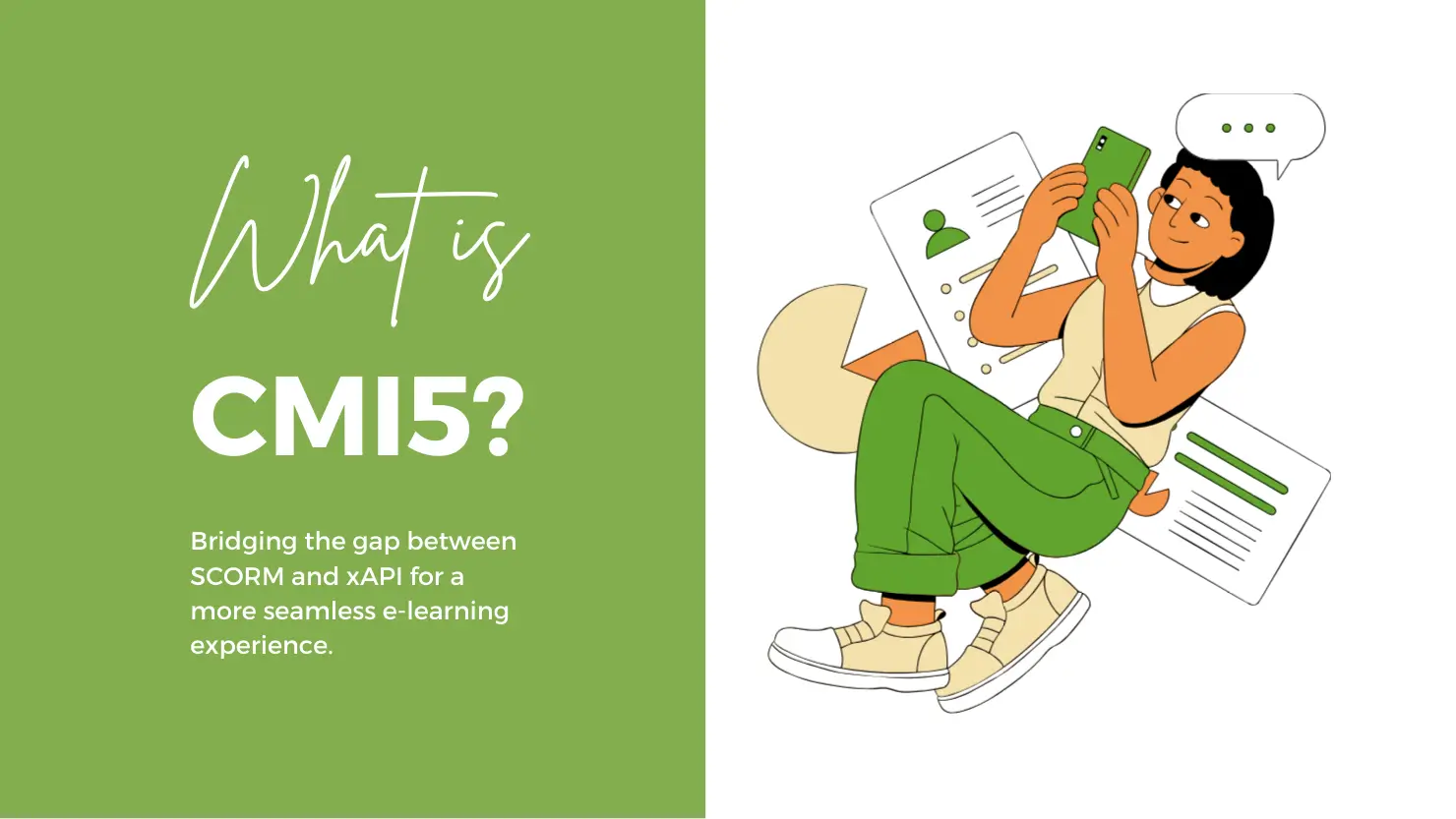
In the world of eLearning standards for learner interaction data structuring, storing, and tracking we have evolved from SCORM to xAPI, and now we have cmi5. And if in case any of you don’t really know what cmi5 is, well, don’t worry. This article will take you on a learning journey, and by the end, you will have a solid understanding of what cmi5 is, the cmi5 specification, and cmi5 LMS support.
What is CMI5?
cmi5 is a modern eLearning specification that defines how learning content communicates with an LMS. It bridges the gap between SCORM (Sharable Content Object Reference Model) and xAPI (Experience API), combining the best of both standards. While SCORM has been the industry standard for content packaging and delivery, cmi5 extends this by incorporating the advanced tracking capabilities of xAPI.
Key features of CMI5
- Flexibility: CMI5 provides a flexible structure that can fit different types of content, including courses, modules, assessments, and simulations.
- Interoperability: CMI5 facilitates the integration of various types of learning content formats with a variety of LMS platforms, regardless of their underlying technologies.
- Efficiency: CMI5 streamlines the content delivery and tracking process, reducing administrative overhead for both content creators and LMS administrators.
- Data Exchange: It provides a standardized way to exchange data related to learner progress, interactions, and performance, enabling valuable analytics and reporting.
LMSs that support CMI5
Commercial LMSs
- Adobe Captivate Prime: A comprehensive LMS with strong authoring tools and integration capabilities.
- Articulate Rise: A cloud-based authoring tool and LMS that supports CMI5.
- Docebo: A flexible and scalable LMS with advanced features and CMI5 compatibility.
- Moodle: A popular open-source LMS that supports CMI5 through plugins.
- SAP Litmos: An enterprise-grade LMS with robust features and CMI5 integration.
- TalentLMS: A user-friendly LMS with a focus on simplicity and CMI5 support.
LRSs Supporting CMI5
LRSs (Learning Record Stores) are essential for collecting, storing, and analyzing learning data. Many LRSs support CMI5 (Content Management Interoperability Services), allowing for seamless integration with CMI5-compliant content and systems.
Here are some popular LRSs that support CMI5:
Commercial LRSs
- GrassBlade LRS: A versatile LRS with strong security, scalability, and integration capabilities.
- Scorm Cloud: A powerful and flexible LRS with advanced features and integrations.
What should you choose between SCORM CMI5 and xAPI?
The choice between SCORM, CMI5, and xAPI depends on your specific needs and requirements. Here’s a breakdown of their key differences and when to use each:
SCORM (Sharable Content Object Reference Model)
- Best for: Structured, LMS-based learning content.
- Pros: Well-established, widely supported, and offers a structured approach.
- Cons: Can be limited in flexibility and may not be suitable for informal or performance-based learning.
CMI5 (Content Management Interoperability Services)
- Best for: Improving interoperability between content and LMSs, especially in structured learning environments.
- Pros: Combines elements of SCORM and xAPI, offering a balance of structure and flexibility.
- Cons: May not be as flexible as xAPI for tracking informal learning activities.
xAPI (Experience API)
- Best for: Tracking a wide range of learning activities, including informal and performance-based learning.
- Pros: Highly flexible, can capture a variety of interactions, and is well-suited for modern learning environments.
- Cons: May require more complex implementation and integration.
When to choose which:
- If you’re working with a traditional LMS and structured learning content: SCORM or CMI5 might be suitable.
- If you need to track a wide range of learning activities, including informal and performance-based learning: xAPI is the best choice.
- If you want a balance between structure and flexibility: CMI5 is a good option.
Additional considerations:
- Integration with existing systems: Consider the compatibility of each standard with your existing LMS, authoring tools, and other systems.
- Data requirements: Determine the specific data you need to track and which standard best supports those requirements.
- Future scalability: Consider the potential for future growth and expansion of your learning programs.
Ultimately, the best choice for you will depend on your specific needs and priorities. It may be helpful to consult with experts or conduct a pilot project to evaluate the suitability of different standards for your organization.
Conclusion
CMI5 is a valuable standard for organizations that want to ensure the interoperability and efficiency of their e-learning programs. By understanding the key features and benefits of CMI5, content developers and LMS administrators can create and deliver effective learning experiences that meet the needs of learners and organizations alike.
